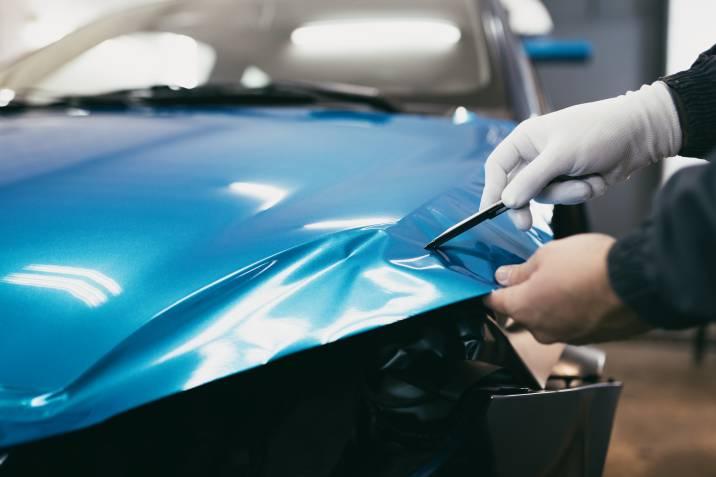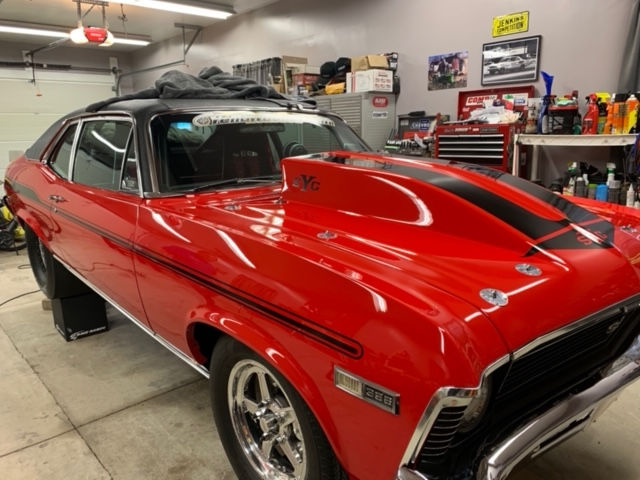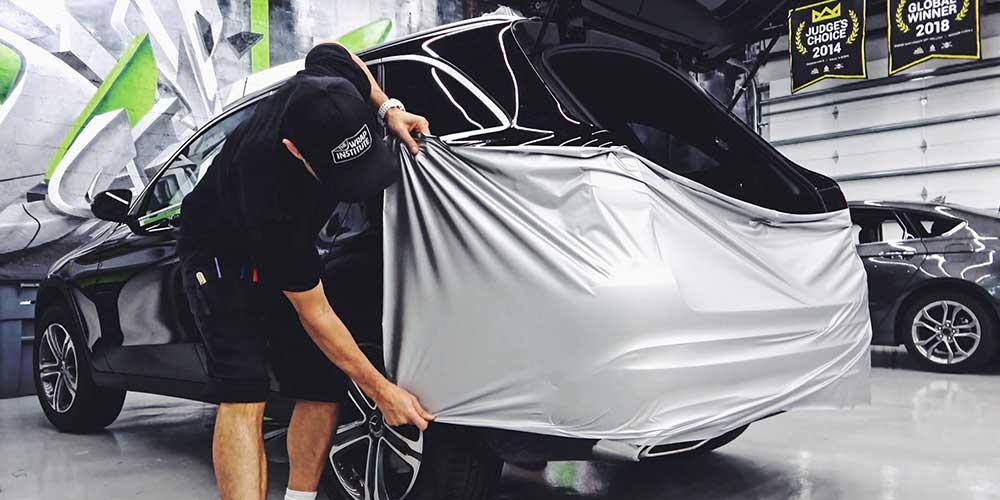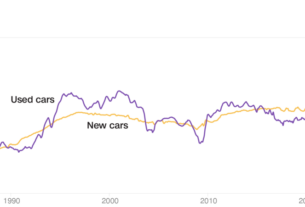When it comes to maintaining the appearance and longevity of your vehicle, car coating is a popular choice among car owners. Not only does it enhance the aesthetic appeal of your car, but it also provides protection against various elements such as UV rays, dirt, and scratches. However, getting your car coated can be a significant investment, so it’s important to understand the costs involved and how you can save money in the process.
Understanding Car Coating Costs

Car coating costs can vary depending on several factors, including the type of coating, the size of your vehicle, and the professional you choose to do the job. Here is a breakdown of the typical costs associated with car coating:
You are watching: Car Coating Costs & Tips
Types of Car Coatings
There are several types of car coatings available in the market, each with its own set of features and price points. The most common types of car coatings include:
- Ceramic Coating: Ceramic coatings are known for their durability and long-lasting protection. They typically last between 2-5 years and can cost anywhere from $500 to $2000, depending on the brand and quality of the coating.
- Paint Protection Film (PPF): PPF is a clear film that is applied to the exterior of the car to protect the paint from chips, scratches, and other damage. The cost of PPF installation can range from $800 to $5000, depending on the size of the vehicle and the coverage area.
- Wax Coating: Wax coatings are the most affordable option, with prices ranging from $50 to $200. While wax coatings provide a temporary layer of protection, they need to be reapplied every few months to maintain effectiveness.
Size of the Vehicle
The size of your vehicle plays a significant role in determining the overall cost of car coating. Larger vehicles such as SUVs and trucks will require more coating material and labor, resulting in higher costs compared to smaller cars.
Professional Installation
While some car owners opt for DIY car coating kits to save money, professional installation is recommended for a flawless finish and long-lasting results. Professional installers have the expertise and tools to ensure proper application, but this service comes at an additional cost.
Tips to Save Money on Car Coating

While car coating can be a substantial investment, there are several ways to save money without compromising on quality. Here are some tips to help you get the best value for your money:
Shop Around for Quotes
Before committing to a car coating service, it’s essential to shop around and compare quotes from different providers. Be sure to inquire about the type of coating used, the warranty offered, and any additional services included in the package.
Consider DIY Options
If you’re on a tight budget, consider exploring DIY car coating kits available in the market. While DIY options may require more time and effort, they can be a cost-effective alternative for those looking to save money.
Opt for Maintenance Packages
Some car coating providers offer maintenance packages that include regular inspections and touch-ups to keep your coating in top condition. Investing in a maintenance package can help prolong the life of your car coating and save money on future repairs.
By understanding the costs involved in car coating and implementing money-saving tips, you can protect your vehicle and enhance its appearance without breaking the bank.
Comprehensive Guide to Vehicle Wrapping
Vehicle wrapping is a popular way to change the look of your car without the permanence of a new paint job. Whether you want to advertise your business, protect your vehicle’s paint, or simply give your car a fresh new look, vehicle wrapping offers a versatile and cost-effective solution. In this comprehensive guide, we’ll explore everything you need to know about vehicle wrapping, from the cost to tips for a successful wrap.
Understanding Vehicle Wrapping Costs
The cost of vehicle wrapping can vary depending on several factors, including the size of your vehicle, the type of wrap material, and the complexity of the design. Here is a breakdown of the typical costs associated with vehicle wrapping:
Types of Wrap Materials
There are several types of wrap materials available in the market, each with its own set of features and price points. The most common types of wrap materials include:
- Vinyl Wrap: Vinyl wraps are the most popular choice for vehicle wrapping due to their durability and versatility. A full vinyl wrap can cost anywhere from $2000 to $5000, depending on the size of the vehicle and the quality of the material.
- Color Change Wrap: Color change wraps allow you to completely change the color of your car without the need for a new paint job. Prices for color change wraps typically range from $1500 to $4000, depending on the color and finish chosen.
- Custom Design Wrap: Custom design wraps involve intricate graphics, logos, or patterns that are tailored to your specific preferences. The cost of a custom design wrap can vary significantly based on the complexity of the design and the amount of material required.
Size and Complexity of the Vehicle
The size and shape of your vehicle will impact the overall cost of the wrapping process. Larger vehicles such as vans, trucks, and buses will require more material and labor, resulting in higher costs compared to smaller cars.
Professional Installation
While some car owners attempt DIY vehicle wrapping to save money, professional installation is recommended for a seamless and professional finish. Professional installers have the skills and experience to ensure proper adhesion and alignment of the wrap, but this service comes at an additional cost.
Tips for a Successful Vehicle Wrap
To ensure a successful vehicle wrap that looks great and lasts long, consider the following tips:
Choose a Reputable Wrap Installer
When selecting a wrap installer, be sure to choose a reputable and experienced professional with a track record of quality work. Ask to see examples of their previous projects and inquire about the type of materials and techniques they use.
Properly Prepare Your Vehicle
Before the wrap installation, it’s crucial to clean and prep your vehicle to ensure optimal adhesion. Remove any dirt, wax, or debris from the surface of the car, and make any necessary repairs to dents or scratches.
Follow Care Instructions
After the wrap is installed, it’s essential to follow the care instructions provided by the installer to maintain the integrity of the wrap. Avoid using harsh chemicals or abrasive materials when cleaning the wrap, and park your car in a shaded area to prevent sun damage.
By understanding the costs involved in vehicle wrapping and following these tips, you can transform the look of your car and protect its paint with a high-quality wrap that stands the test of time.
10 Ways to Save Money on Car Maintenance
Car maintenance is an essential aspect of owning a vehicle, but it can also be a significant expense. From routine oil changes to unexpected repairs, the costs of keeping your car in top condition can add up quickly. However, there are several ways to save money on car maintenance without sacrificing the quality of service. In this guide, we’ll explore 10 practical tips to help you reduce your car maintenance costs and keep your vehicle running smoothly.
Perform Regular Maintenance Checks
Regular maintenance checks are key to preventing costly repairs down the line. By staying on top of routine tasks such as oil changes, tire rotations, and fluid top-ups, you can identify potential issues early and address them before they escalate into major problems.
Create a Maintenance Schedule
Developing a maintenance schedule based on your vehicle’s manufacturer recommendations can help you stay organized and ensure that all necessary tasks are completed on time. Keep track of mileage milestones and schedule appointments in advance to avoid last-minute expenses.
Learn Basic DIY Skills
While some car maintenance tasks require professional expertise, there are several simple tasks that you can learn to do yourself, such as changing air filters, checking tire pressure, and replacing wiper blades. By mastering these basic skills, you can save money on labor costs and keep your car in good condition.
Invest in Quality Parts
When replacing parts or components in your car, opt for high-quality, OEM (Original Equipment Manufacturer) parts instead of aftermarket alternatives. While OEM parts may be slightly more expensive upfront, they are designed to fit your vehicle perfectly and offer better performance and longevity.
Shop Around for Service Providers

When it comes to car maintenance, it pays to shop around and compare prices from different service providers. Get quotes from multiple mechanics or auto shops for routine services such as oil changes or brake inspections, and choose the one that offers the best value for your money.
Look for Special Deals and Discounts
Many auto shops and dealerships offer special deals and discounts on car maintenance services, especially during off-peak seasons. Keep an eye out for promotions such as discounted oil changes, free inspections, or bundled service packages to save money on essential maintenance tasks.
Consider Independent Mechanics
Independent mechanics or local garages often provide quality service at a lower cost compared to dealership service centers. Building a relationship with a trusted independent mechanic can lead to personalized service, competitive pricing, and peace of mind knowing that your car is in good hands.
Prioritize Preventative Maintenance
Preventative maintenance measures such as regular tune-ups, wheel alignments, and fluid flushes can help extend the life of your vehicle and prevent costly repairs in the future. Investing in preventative maintenance now can save you money on major repairs later on.
Monitor Your Driving Habits
Your driving habits can have a significant impact on your car’s maintenance needs and fuel efficiency. Avoid aggressive driving, excessive idling, and overloading your vehicle to reduce wear and tear on essential components and improve overall performance.
Practice Fuel-Efficient Driving
Driving at moderate speeds, maintaining a steady pace, and avoiding sudden stops and starts can help improve fuel efficiency and reduce the strain on your engine. By practicing fuel-efficient driving techniques, you can save money on gas and minimize the need for frequent maintenance.
Use the Right Fuel and Fluids
Using the correct type of fuel, oil, and other fluids recommended by your vehicle manufacturer is essential for optimal performance and longevity. Avoid using cheap or low-quality products that can cause damage to your engine and other critical components.
Keep Your Car Clean and Well-Maintained
Regularly washing and waxing your car, cleaning the interior, and protecting it from environmental hazards can help preserve its appearance and functionality. By taking care of your vehicle inside and out, you can prevent premature wear and damage that may lead to costly repairs.
By implementing these 10 practical tips, you can save money on car maintenance and ensure that your vehicle remains in top condition for years to come.
Ultimate Guide to Car Detailing
Car detailing is a meticulous process of cleaning, restoring, and protecting the interior and exterior of a vehicle to achieve a showroom-quality finish. While professional detailing services can be costly, there are several ways to achieve professional results at home with the right tools and techniques. In this ultimate guide to car detailing, we’ll cover everything you need to know to keep your car looking its best inside and out.
Understanding the Basics of Car Detailing
Car detailing involves a thorough cleaning and restoration process that goes beyond a standard car wash. The goal of detailing is to remove dirt, grime, and imperfections from the surface of the vehicle and restore its appearance to like-new condition. Here are the key steps involved in car detailing:
Exterior Detailing
Exterior detailing focuses on cleaning and restoring the exterior surfaces of the vehicle, including the paint, glass, wheels, and trim. The process typically includes washing, claying, polishing, and waxing to remove contaminants, restore shine, and provide protection against the elements.
- Washing: Start by washing the exterior of the car with a pH-balanced car shampoo and a microfiber wash mitt to remove dirt and debris without scratching the paint.
- Claying: Use a clay bar to remove embedded contaminants such as tar, tree sap, and industrial fallout from the paint surface, leaving it smooth and clean.
- Polishing: Polish the paint with a dual-action polisher and a suitable polish compound to remove swirl marks, light scratches, and oxidation, restoring clarity and shine.
- Waxing: Apply a coat of carnauba wax or synthetic sealant to protect the paint and enhance gloss, providing a durable barrier against UV rays, water spots, and environmental damage.
Interior Detailing
Interior detailing focuses on cleaning and restoring the interior surfaces of the vehicle, including the dashboard, seats, carpets, and upholstery. The process typically includes vacuuming, steam cleaning, and conditioning to remove dirt, stains, and odors and restore a fresh and inviting interior.
- Vacuuming: Use a high-powered vacuum cleaner with various attachments to remove dirt, dust, and debris from the carpets, seats, and crevices of the interior.
- Steam Cleaning: Steam clean fabric upholstery, carpets, and hard-to-reach areas to lift stains, kill bacteria, and refresh the interior without using harsh chemicals.
- Conditioning: Treat leather surfaces with a quality leather conditioner to nourish and protect the material, restoring suppleness and preventing cracking and fading over time.
Tips and Tricks for DIY Car Detailing
While professional detailing services can yield exceptional results, you can achieve similar outcomes at home with the right tools, products, and techniques. Here are some tips and tricks for DIY car detailing:
Invest in Quality Products
When it comes to car detailing, using high-quality products and tools can make a significant difference in the final result. Invest in professional-grade shampoos, polishes, waxes, and interior cleaners to achieve superior cleaning and protection.
Use the Two-Bucket Method
To prevent swirl marks and scratches during the washing process, use the two-bucket method: one bucket for clean, soapy water and another bucket with plain water for rinsing the wash mitt after each pass.
Work in Sections
When detailing the exterior of your car, work in small sections to ensure thorough cleaning and polishing. Focus on one panel at a time, starting from the top and working your way down to prevent water spots and product buildup.
Protect Your Hands and Skin
Detailing products can contain harsh chemicals that may irritate your skin, so it’s essential to wear protective gloves and clothing when handling cleaning agents and polishes. Additionally, work in a well-ventilated area to avoid inhaling fumes.
By following these tips and tricks for DIY car detailing, you can achieve professional results and keep your vehicle looking pristine without the high costs of professional services.
DIY Car Care: Tips and Tricks
Taking care of your car doesn’t always have to involve expensive trips to the mechanic or detailing shop. With a little know-how and some basic tools, you can perform many car maintenance tasks and repairs yourself, saving time and money in the process. In this guide, we’ll share some essential tips and tricks for DIY car care that every car owner should know.
Essential Tools for DIY Car Care
Having the right tools on hand is essential for performing DIY car maintenance tasks effectively. Here are some basic tools that every car owner should have in their toolkit:
Socket Set
A socket set with a variety of metric and standard sockets, ratchets, and extensions is essential for removing and tightening nuts and bolts on your car.
Screwdriver Set
A set of flathead and Phillips screwdrivers in various sizes will come in handy for removing interior panels, trim pieces, and other fasteners.
Jack and Jack Stands
A hydraulic floor jack and a pair of jack stands are essential for lifting your car safely and securely when performing maintenance tasks such as oil changes or tire rotations.
Oil Filter Wrench
An oil filter wrench makes it easier to remove and replace the oil filter during an oil change without damaging the filter or surrounding components.
Multimeter
A digital multimeter allows you to test electrical circuits, check battery voltage, and diagnose electrical issues in your car’s wiring system.
DIY Car Care Tips and Tricks
With the right tools and knowledge, you can tackle a wide range of car maintenance tasks and repairs on your own. Here are some essential DIY car care tips and tricks to help you keep your vehicle in top condition:
Change Your Oil Regularly
Regular oil changes are essential for maintaining the health and longevity of your engine. Check your owner’s manual for the recommended oil change interval and use high-quality motor oil that meets the specifications of your vehicle.
Inspect and Rotate Your Tires
Inspecting your tires regularly for signs of wear, damage, or improper inflation can help prevent blowouts and extend the life of your tires. Rotate your tires every 5,000 to 7,000 miles to ensure even wear and optimal performance.
Replace Air Filters
See more : Want To Get Rid of Your Car but Still Owe More Than It’s Worth? 5 Things You Can Do To Come Out Even
Air filters play a crucial role in maintaining good air quality in your engine and cabin. Check and replace your engine air filter every 12,000 to 15,000 miles and your cabin air filter every 15,000 to 30,000 miles to ensure proper airflow and filtration.
Check Fluid Levels
Monitoring the levels of essential fluids such as engine oil, coolant, brake fluid, and power steering fluid is vital for the proper functioning of your car. Check fluid levels regularly and top up as needed to prevent damage and maintain performance.
Maintain Your Battery
A healthy battery is essential for starting your car and powering electrical components. Clean the battery terminals regularly, check the battery voltage with a multimeter, and replace the battery if it shows signs of weakness or corrosion.
Address Minor Repairs Promptly
Small issues such as squeaky brakes, dim headlights, or rattling noises should not be ignored, as they can indicate underlying problems that may worsen over time. Address minor repairs promptly to prevent further damage and costly repairs.
Keep Your Car Clean
Regularly washing and waxing your car not only improves its appearance but also protects the paint and prevents rust and corrosion. Clean the interior regularly to remove dirt, dust, and
vacuum cleaner to remove debris and dust from hard-to-reach areas.
By following these DIY car care tips and tricks, you can save money on maintenance costs and ensure that your vehicle remains in top condition for years to come.
Essential Car Tips for Beginners
Owning a car comes with a set of responsibilities, especially for beginners who may be new to vehicle ownership. From basic maintenance tasks to understanding common car issues, here are some essential car tips for beginners to help you navigate the world of automotive care.
Understanding Your Owner’s Manual
Your owner’s manual is a valuable resource that provides information about your car’s specifications, recommended maintenance schedule, and troubleshooting tips. Take the time to read and familiarize yourself with the manual to better understand how to care for your vehicle.
Basic Maintenance Tasks
Learning how to perform basic maintenance tasks such as checking fluid levels, changing wiper blades, and replacing air filters can save you time and money on trips to the mechanic. Invest in a basic toolkit and educate yourself on simple car repairs to become more self-sufficient.
Recognizing Common Car Issues
Being able to recognize common car issues such as strange noises, dashboard warning lights, and changes in performance can help you address problems early and prevent further damage. Pay attention to any unusual signs or symptoms and seek professional help if needed.
Finding a Trusted Mechanic
Establishing a relationship with a trusted mechanic or auto repair shop is essential for maintaining your car’s health. Look for certified technicians, read reviews, and ask for recommendations from friends and family to find a reliable professional who can assist you with maintenance and repairs.
Budgeting for Car Expenses
Owning a car involves various expenses, including fuel, insurance, maintenance, and repairs. Create a budget to account for these costs and set aside a fund for unexpected repairs or emergencies to avoid financial strain down the road.
Safe Driving Practices
Practicing safe driving habits not only protects you and your passengers but also helps maintain the health and longevity of your car. Avoid aggressive driving, adhere to speed limits, and perform regular maintenance checks to ensure a safe and smooth driving experience.
Vehicle Registration and Insurance
Ensure that your car is properly registered and insured to comply with legal requirements and protect yourself in the event of an accident or theft. Familiarize yourself with local regulations and renewal deadlines to avoid penalties or fines.
By following these essential car tips for beginners, you can build confidence in caring for your vehicle and enjoy a smoother and more rewarding ownership experience.
Expert Advice on Prolonging Car Life
Prolonging the life of your car involves a combination of regular maintenance, proper care, and smart driving habits. By following expert advice and implementing preventive measures, you can extend the lifespan of your vehicle and maximize its performance and resale value. Here are some tips from automotive professionals on how to prolong your car’s life:
Regular Maintenance Schedule
Adhering to a regular maintenance schedule is crucial for keeping your car in optimal condition. Follow the manufacturer’s recommended service intervals for oil changes, filter replacements, tire rotations, and other routine maintenance tasks to prevent wear and tear and ensure peak performance.
Quality Parts and Fluids
Using high-quality parts and fluids is essential for maintaining the health of your car’s engine, transmission, and other critical components. Opt for genuine OEM parts and fluids that meet or exceed the manufacturer’s specifications to ensure compatibility and reliability.
Driving Habits
Your driving habits have a significant impact on your car’s longevity. Avoid aggressive driving, excessive idling, and sudden stops, as these behaviors can accelerate wear on your engine, brakes, and suspension components. Practice smooth acceleration and braking to reduce stress on your vehicle and improve fuel efficiency.
Storage and Protection
Properly storing and protecting your car can help prevent damage from environmental factors such as sunlight, rain, snow, and debris. Park in a garage or shaded area whenever possible, use a car cover to shield your vehicle from the elements, and apply wax and sealants to protect the paint and finish.
Addressing Issues Promptly
Ignoring warning signs or neglecting maintenance tasks can lead to costly repairs and premature wear on your car. If you notice any unusual noises, vibrations, leaks, or dashboard warning lights, have your car inspected by a professional mechanic to diagnose and address the issue promptly.
Seasonal Maintenance
Adjusting your maintenance routine according to seasonal changes can help prepare your car for different weather conditions and driving challenges. Check your battery, tires, brakes, and fluids before winter and summer to ensure that your car is ready for the road and capable of handling seasonal demands.
Professional Inspections
Regular inspections by a qualified mechanic can help identify potential issues early and prevent major breakdowns or failures. Schedule periodic check-ups and diagnostic tests to assess the health of your car’s systems and address any concerns before they escalate into more significant problems.
By following this expert advice on prolonging your car’s life, you can enjoy a reliable and well-maintained vehicle for years to come. Investing time and effort in caring for your car now can save you money on repairs and replacements in the future while ensuring a safe and enjoyable driving experience.
Conclusion
In conclusion, caring for your car is essential for maintaining its appearance, performance, and longevity. Whether you’re looking to save money on maintenance costs, enhance your vehicle’s customization, or prolong its life, the tips and guides provided in this comprehensive car care article can help you achieve your goals.
From DIY car detailing and maintenance tips to expert advice on prolonging your car’s life, there are numerous strategies and techniques you can implement to keep your vehicle in top condition. By investing time, effort, and resources in caring for your car, you can enjoy a safe, reliable, and enjoyable driving experience for years to come.
Remember, regular maintenance, safe driving practices, and attention to detail are key components of effective car care. Whether you’re a beginner or an experienced car owner, incorporating these tips and tricks into your car care routine can make a significant difference in the health and longevity of your vehicle.
So, take the time to prioritize car care, stay informed about best practices, and don’t hesitate to seek professional help when needed. With the right knowledge and commitment, you can ensure that your car remains a source of pride and satisfaction for years to come.
Source: https://us.congthucvatly.com
Category: Car


